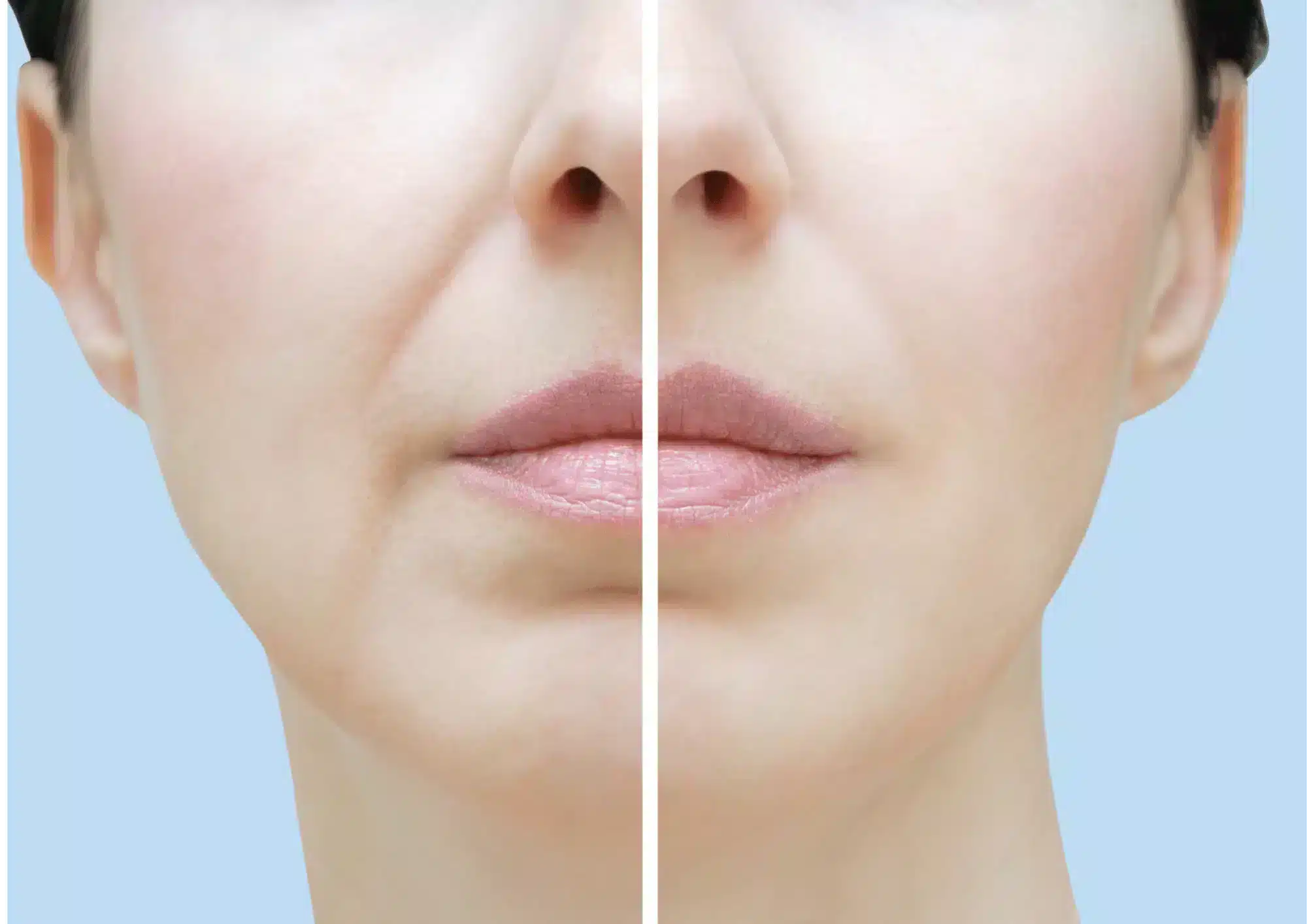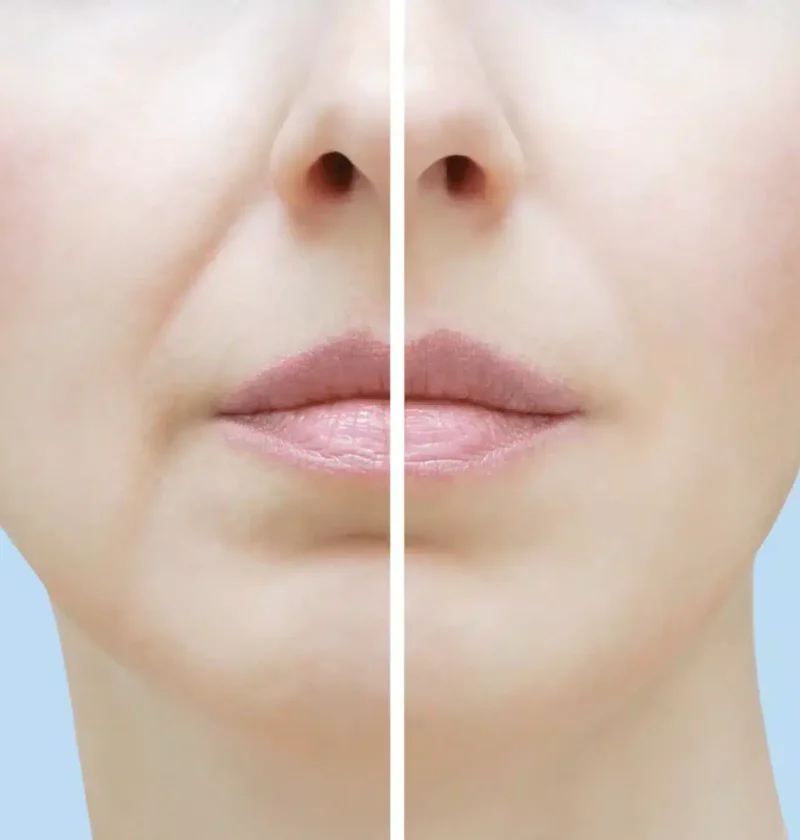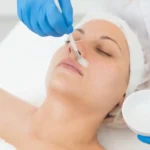
Restylane offers a various dermal fillers for the treatment of nasolabial folds. Restylane is the classic choice for wrinkle filling, producing excellent results and having an established efficacy and safety profile. Restylane Refyne and Defyne are newer additions to the Restylane portfolio, which are both indicated for the correction of nasolabial folds. These products are specially formulated to maintain facial expressions in the most dynamic regions of the face, for subtle and natural enhancement. This wrinkle filler targets the folds directly, plumping them and filling them out. However, in other cases, Restylane Lyft’s highly viscous, cohesive formula can be injected into the cheeks to lift the lower face.
Nasolabial folds and smile lines, are they the same thing?
In the world of aesthetics, one of the most requested enhancements is for the effacement of nasolabial folds. However, treating nasolabial folds requires a detailed understanding of the effects of aging on the facial structures. As the face ages, volume loss, skin laxity, and weakening of supporting structures in the mid-face result in the descent of the malar fat pads. As these pads move downward, they bulge against the nasolabial folds, accentuating them. In some cases, the fold also deepens with repeated muscle movements due to facial expressions, leading to their nickname, “smile lines.” For this reason, may patients have the perception that having deep nasolabial folds ages their face, hence why correction of these folds is so popular.
Choosing Restylane for nasolabial folds
While previous approaches to treating the nasolabial folds tended to view them in isolation and to utilize skin tightening and lift techniques, newer trends advocate for a holistic approach that views the face as a whole, understanding how altering one facial area affects another. In the case of nasolabial folds, it has now understood that restoring volume to the mid-face will improve their appearance, as creating fullness in this area can subsequently lift the lower face.
What to expect when using Restylane for nasolabial folds
A Restylane treatment session is a straightforward, 20- to 30-minute injection procedure held in the doctor’s office. First, a consultation is carried out to discuss the patient’s concerns and outline a personalized approach to treatment. Then, the injection process may begin. To start, patient’s skin is cleansed and disinfected with antiseptic. For more pain-sensitive patients, lidocaine injections or numbing creams can be applied. The injection technique employed will vary by practitioner preference, the area being treated, and the patient’s skin type. Usually, some combination of fanning, serial puncture, or cross-hatching is used. After injection, the area is massaged to even out the filler and remove any lumps.
How fast can you see results?
The results of a Restylane treatment are instantly visible, and are relatively durable. Generally speaking, side effects are minimal, and are usually restricted to injection-related reactions like swelling, bruising and bleeding. These are typically mild in severity and should subside on their own within one week. While there is no recovery period, the patient should be advised about some post-treatment considerations, including reducing alcohol intake to minimize bruising and bleeding, and limiting sun and heat exposure.
All in all, treating the nasolabial folds with Restylane is a safe, minimally invasive, and effective way to achieve your patient’s desired outcomes.
Aesthetic medicine products are developed and regulated to meet stringent safety and efficacy standards. They are typically administered by trained healthcare professionals such as dermatologists, plastic surgeons, and specialized nurses in clinical settings. These products aim to provide effective solutions for cosmetic enhancement, skin rejuvenation, and overall aesthetic improvement, contributing to both physical appearance and self-confidence.
Key categories of aesthetic medicine products include:
-
Injectables: This category includes products such as dermal fillers, botulinum toxins (e.g., Botox), and collagen stimulators. These injectables are used to smooth wrinkles, add volume, and improve facial contours.
-
Skin Rejuvenation Treatments: Products like chemical peels, microdermabrasion systems, and laser devices are used to improve skin texture, reduce pigmentation irregularities, and enhance overall skin tone.
-
Skincare Products: These include medical-grade cleansers, moisturizers, serums, and topical treatments containing active ingredients like retinoids, antioxidants, and growth factors. They are formulated to address specific skin concerns such as acne, aging, and hyperpigmentation.
-
Hair Restoration Products: Medical treatments and products designed to promote hair growth and treat conditions such as male and female pattern baldness.
-
Body Contouring and Fat Reduction: Devices and products used for non-surgical body sculpting, such as cryolipolysis (cool sculpting) devices and injectable lipolytics.
-
Cosmeceuticals: High-performance skincare products that bridge the gap between cosmetics and pharmaceuticals, often containing potent ingredients with proven clinical benefits.
-
Wound Care and Scar Management: Products like silicone sheets, gels, and advanced wound dressings used to improve healing and reduce the appearance of scars.





